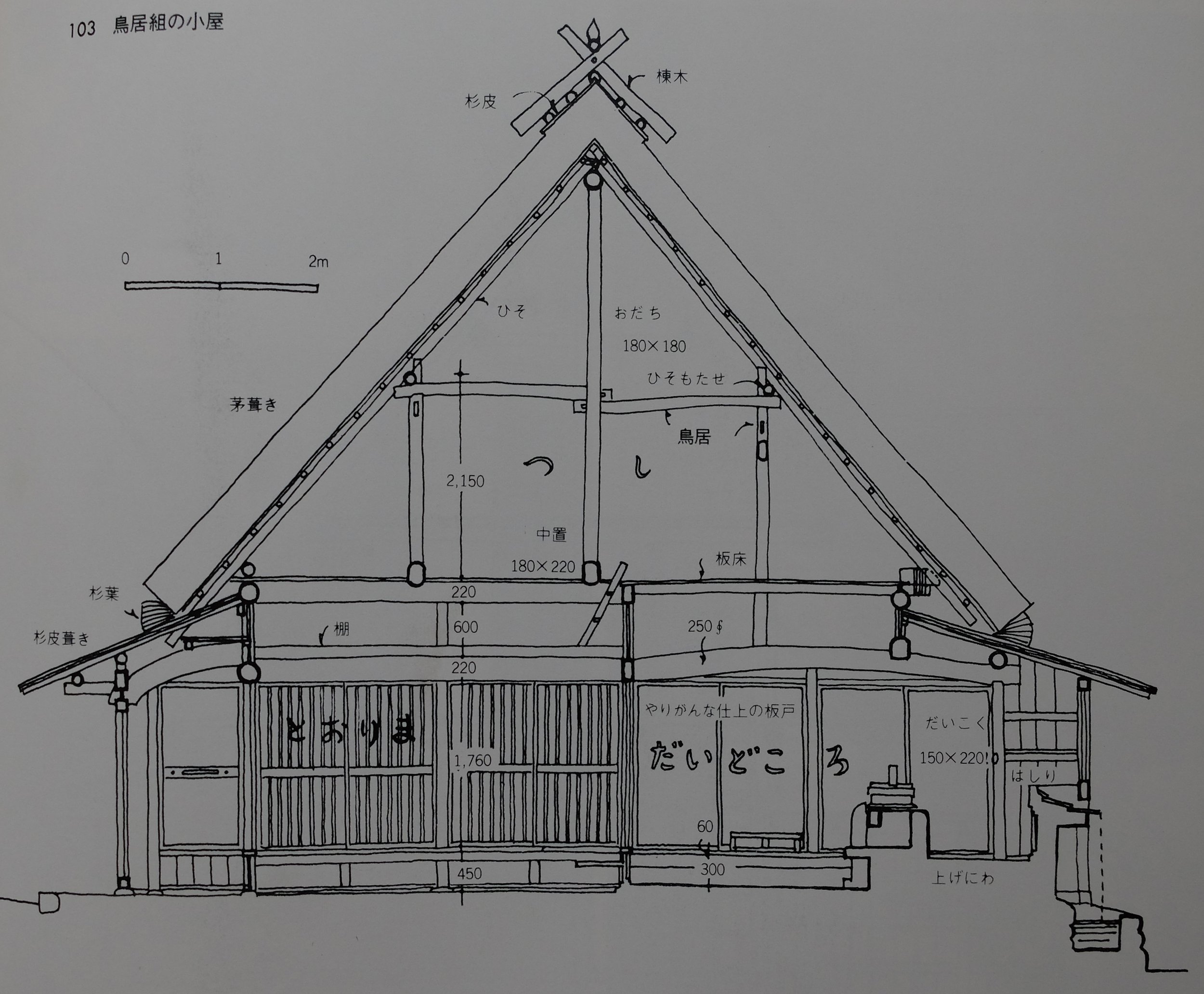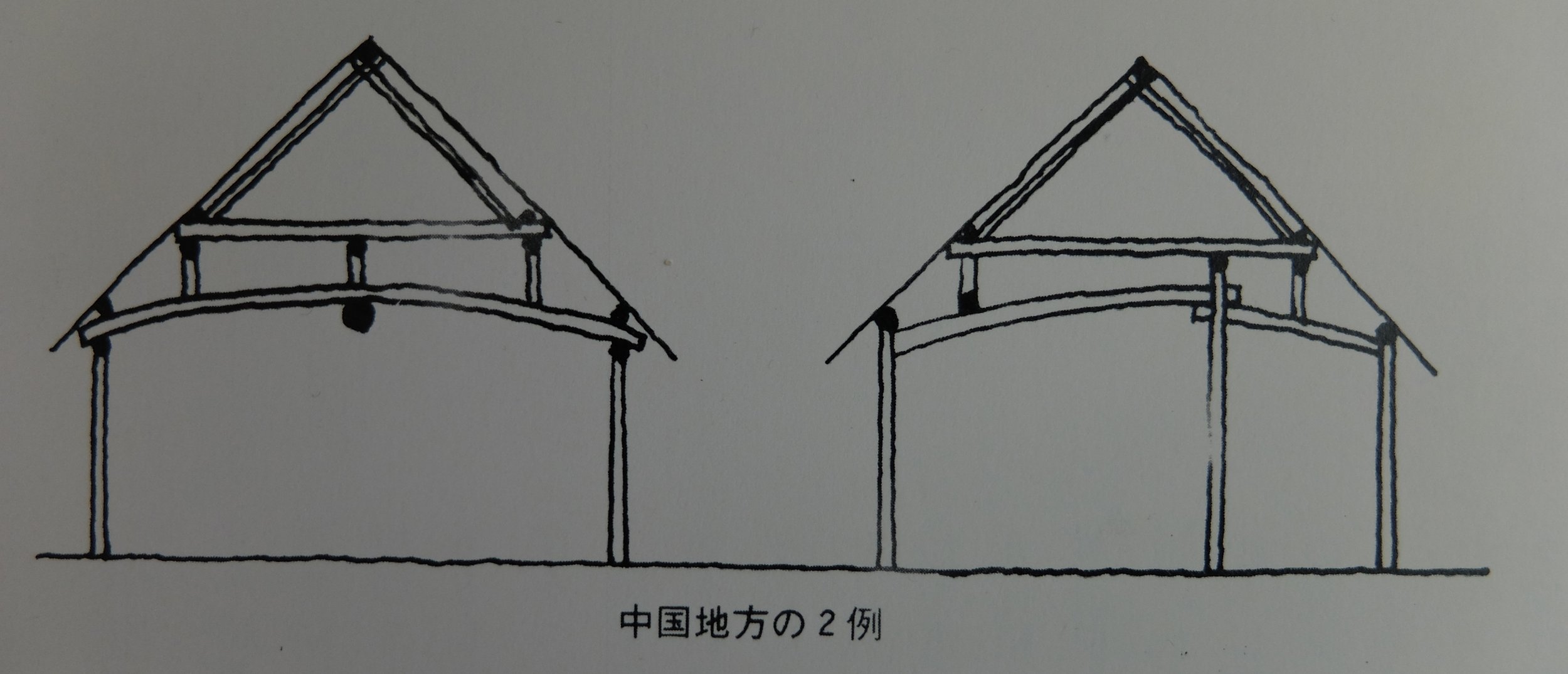The plan below is of a single-space minka in the middle reaches of the Shinano River (信濃川) in Niigata Prefecture. Built some time in the mid 19th century, it was the home of a lower-class farming family; apparently many such minka were once found in the area.
A single-space (tanshitsu-sumai 単室住まい) minka with separate (bunri 分離) sleeping area (nema ねま). The whole interior is earth-floored (doza 土座). Labelled are the entrance (iri-guchi 入口), agricultural work (nо̄-sagyо̄ 農作業), handwork (te-shigoto 手仕事), fire pit (irori いろり), food preparation (tabemono-chо̄sei 食物調整), food storage (shokuryо̄-chozо̄ 食糧貯蔵) dining (shoku-ji 食事), family (danran 団らん), receiving guests (sekkyaku 接客), ‘events’ (gyо̄ji 行事), partitioned enclosure (kakoi かこい) for the wife’s ‘retiring’ area (shufu-shūshin), and the family retiring area (kazoku-shūshin 家族就寝). The vertical dot-dash lines dividing the interior indicate hypothetical partition locations that would make this single space a three-room hiroma-gata (広間型) type interior.
The whole interior is earth-floored (doza 土座), with only the wife’s sleeping area partitioned off. The interior is close, with few windows; there are no wardrobes (oshi-iri 押入), alcoves (tokonoma 床の間) or the like, and the structural members are adze-finished. Though the building dates to the Tokugawa Shо̄gunate, it was inhabited until at least the 1950s; it might surprise some to learn that there were still ‘economically disadvantaged’ people living in such apparently primitive conditions and straitened circumstances well into the era of Japan’s ‘economic miracle’. But perhaps it was comfortable, familiar, and enough for their needs.
With its utility area (doma 土間) adjacent to the entrance, living area (hiroma 広間) with fire place (irori いろり), the more formal zashiki (座敷) or ‘public’ functions conducted in the southern part of the space, and sleeping ‘room’ (nema 寝間) to the north, a hypothetical partitioning of this minka would result in a three-room hiroma-gata (広間型) type.






































































































